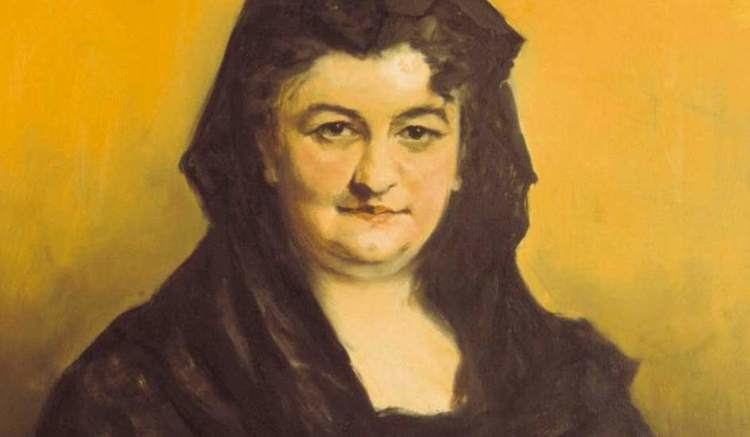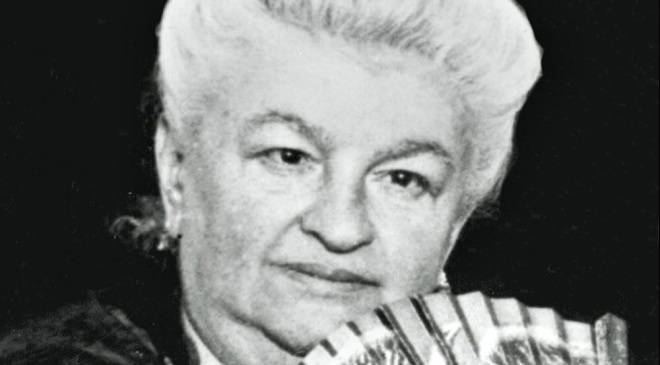Nationality Spanish Children 3 Period Nineteeth century Name Emilia Bazan | Genre Novel Role Novelist Movies The Black Siren | |
 | ||
Born 16 September 1851
A Coruna, Spain ( 1851-09-16 ) Occupation Novelist, short story writer, journalist, critic Died May 12, 1921, Madrid, Spain Spouse Jose Fernando Quiroga y Perez de Deza (m. 1868–1884) Parents Jose Maria Pardo-Bazan y Mosquera, Amalia Maria de la Rua-Figueroa y Somoza Books Los pazos de Ulloa, La tribuna, La Madre Naturaleza, The House of Ulloa, "Naufragas" y otros cuentos Similar People Benito Perez Galdos, Leopoldo Alas, Rosalia de Castro, Jose Maria de Pereda, Juan Eugenio Hartzenbusch | ||
Literary movement Realism and Naturalism | ||
Marina mayoral sobre emilia pardo baz n
Emilia Pardo Bazán (16 September 1851 – 12 May 1921) was a Spanish novelist, journalist, essayist, critic and scholar.
Contents

"Un viaje de novios"
Life

Pardo Bazán was born into a noble family in A Coruña, Galicia, Spain. The culture of her birthplace was incorporated into some of her most popular novels, including Los pazos de Ulloa ("The House of Ulloa") and its sequel, La madre naturaleza ("Mother Nature"). She is known for introducing naturalism to Spanish literature, for her detailed descriptions of reality, and for her role in feminist literature of her era. She was acknowledged for her creative stories such as Temprano y con Sol, which explicitly describes an ironic misfortune. She wrote a book called in which she expressed her opinion about equality. She was educated in Madrid.

At the age of sixteen she married Don José Antonio de Quiroga y Pérez de Deza, a country gentleman. She became interested in politics, and is believed to have taken an active part in the underground campaign against Amadeo of Spain and, later, against the republic. In 1876 she was the successful competitor for a literary prize offered by the municipality of Oviedo, the subject of her essay being the Benedictine monk Benito Jerónimo Feijoo. This was followed by a series of articles inserted in La Ciencia cristiana, a magazine of the purest orthodoxy, edited by Juan M. Orti y Lara.
Her first novel, Pascual López (1879), was followed by Un viaje de novios (1881), in which a discreet attempt was made to introduce the methods of French realism. The novel caused a sensation, which was increased by the appearance of another naturalistic tale, La tribuna (1885), wherein the influence of Émile Zola is unmistakable. Meanwhile, the writer's response to her critics was issued under the title of La cuestion palpitante (1883).

The naturalistic scenes of El Cisne de Villamorta (1885) are more numerous, more pronounced, than in any of its predecessors, though the author shrinks from the logical application of her theories by supplying a romantic and inappropriate ending. Probably the best of Emilia Pardo Bazán's work is embodied in Los pazos de Ulloa (1886), translated as The House of Ulloa by, 2013, which recounts the decadent of an aristocratic family, as notable for the heroes Nucha and Julián as for characters including the political bravos, Barbacana and Trampeta. Yet perhaps its most abiding merit lies in its pictures of country life, its poetic realization of Galician scenery portrayed in an elaborate, highly colored style. A sequel, with the significant title of La madre naturaleza (1887), marks a further advance in the path of naturalism, and henceforth Pardo Bazán was universally recognized as one of the chiefs of the new naturalistic movement in Spain. The title was confirmed by the publication of Insolación and Morriña in 1889. In this year her reputation as a novelist reached its highest point. Her later stories, La cristiana (1890), Cuentos de amor (1894), Arco Iris (1895), Misterio (1903) and La quimera (1905), attracted less interest. In 1905 she published a play entitled Verdad, known for its boldness more than its dramatic qualities.
She inherited the title of Countess on her father's death in 1908 and in 1910 was appointed a member of the Council of Public Instruction. Her last novel Dulce Dueño was published in 1911. In 1921 she was appointed to the Senate but never formally took up her seat.
Her husband, José Quiroga, purchased Castle of Santa Cruz in A Coruña, Galicia at an auction and they resided there for years. She died in Madrid in 1921.
Childhood and education
Emilia Pardo Bazán was the daughter of a Galician noble family that was very wealthy and affluent in Spain. The papal count of Pardo-Bazán, José María Pardo-Bazán and Mosquera, were titles Alfonso XIII bestowed upon her in 1908, and Amalia María de la Rúa-Figueroa and Somoza. Her father, believing in the rights of women, provided her with the best education possible, that cemented her love for literature. Besides the residence on a street called Tabernas, the family owned two other houses, one close to Sanxenxo, and the other near the outskirts of A Coruña, the Pazo de Meirás. At nine year of age, she was already beginning to show great interest in the scriptures. In her father's library she had access to a broad variety of readings; she stated that among her favorite readings were Don Quijote de la Mancha, the Bible and the Iliad. In the house by A Coruña, she read La conquista de México by Antonio de Solís and the Parallel Lives by Plutarch. The books about the French revolution fascinated her. When her family would travel to Madrid during the winters, Emilia attended a french school sponsored by the Royal Family, where she was introduced to the work of La Fontaine and Jean Racine —her frequent visits to France would prove to be especially useful later in her life, by helping her connect with the literary world of Europe and become familiar with relevant authors like Victor Hugo—. At twelve years of age, her family decided to stay in A Coruña during the winters and there she studied with private tutors. She refused to follow the rules that limited women to just learning about music and home economics. She received formal education on all types of subject matter with emphasis in the humanities and languages. She became fluent in French, English, and German. She was not permitted to attend college. Women were forbidden to study science and philosophy, but she became familiar with those subjects by talking with friends of her father and by reading books on the subjects.
